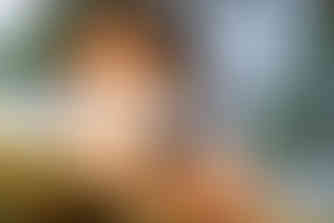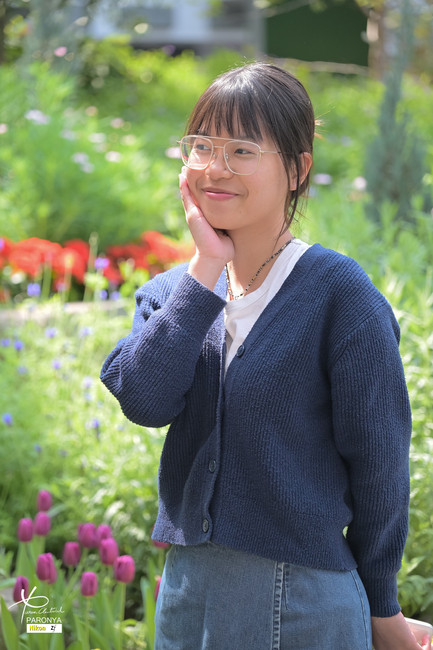Nikkor Z 24-120 f/4 S
- Paron Chatakul
- Apr 15, 2024
- 2 min read
Updated: Apr 3

แล้วก็วนมาถึงรีวิวเลนส์ที่ออกมานานแล้วอย่าง 24-120 f4 ของนิคอนกันบ้าง ก่อนหน้านี้ผมเคยใช้เลนส์ช่วงนี้อยู่ตัวหนึ่งคือ Panasonic Lumix S 24-105 F4 Macro OIS ซึ่งเคยริวิวกันไปแล้ว (https://www.paronya.com/single-post/panasonic-lumixs-24-105-f4-macro-ois) ซึ่งสีสันและคาแรกเตอร์แตกต่างกับนิคอนตัวนี้โดยสิ้นเชิง สีสันและบรรยากาศของภาพมันส่งผลต่ออารมณ์ของเราเวลากลับมามองภาพแล้วย้อนนึกถึงเหตุการณ์นั้น ๆ เหมือนกันนะครับ เอาล่ะเราจะไม่พูดกันเรื่องนี้เพราะเคยเขียนไปเยอะแล้ว คราวนี้กดมาที่นิคอนเน้น ๆ เลยครับ แน่นอนว่าโฟกัสเร็วกว่ามหาศาล เรื่องนี้ต้องดูที่กล้องกับเลนส์ประกอบกันด้วยนะครับ เลนส์อาจไม่ได้ช้าแต่กล้องช้าก็จบกัน เพราะตัว Panasonic ตอนนั้นผมประกบกับ Sigma fp เรื่องความไวการโฟกัสก็เลิกพูดกันไปได้ ส่วน Nikon ผมมีโอกาสใช้ Z6ii ก่อนที่จะเปลี่ยนมาเป็น Zf พบว่า โฟกัสมันไวขึ้นอย่างรู้สึกได้ จิกได้ตลอด เมื่อใช้กับเลนส์ตัวนี้ผมเปิด AF-C + face detection เอาไว้ตลอด กล้อง+เลนส์ตัวนี้ที่มี stepper motor 2 ตัว ก็จับโฟกัสได้ทันไม่มีภาพเสียเลยครับ (ยกเว้นไปเจอจังหวะเอ๋อ เปลี่ยนจุดโฟกัสไปจับหน้าคนอื่นที่เราไม่ต้องการ)

During the time I used the Z6ii, we went out shooting like this, no worries.
สีสันของภาพ ผมว่ากล้องนิคอน ในภาพโดยรวมจะติดเหลืองนิด ๆ สกินโทนไม่สวย ส่วนกล้อง L-mount ทั้งหลายจะอมม่วงมากกว่า (ซึ่งผมชอบมากกว่า ถ่ายคนสวยดี แต่ไม่จืด ถ่ายต้นไม้ใบไม้สีก็สดแน่นดี) แล้ว L-mount ทั้งหลายตอนที่ใช้ ไม่เคยสนใจเปลี่ยนโปรไฟล์ของภาพเลยแม้แต่น้อย แต่พอมาใช้นิคอน ต้องคอยปรับคอยเปลี่ยนโปรไฟล์ให้เข้ากับภาพที่เรากำลังถ่ายอยู่เสมอ ๆ มันก็วุ่นวายนิดหน่อย ไม่ค่อยชอบหรอกครับแต่ก็ต้องทำใจ ถ้าวินาทีที่ Leica SL-3 ออกมาแล้วโฟกัสได้ไวเท่าชาวบ้านเขาแล้วก็น่าสนใจที่จะย้ายค่ายกลับไปเหมือนกัน

Nikon Zf + Nikkor Z 24-120 f/4 S

Nikon Zf + Nikkor Z 24-120 f/4 S
ด้วยคุณภาพของเลนส์ที่แปะตรา S-line มา ทำให้ไว้วางใจได้ว่าภาพที่ได้จะมีคุณภาพดี คมยันขอบ แถมด้วยไมโครคอนทราสต์ดี ภาพมีความเด้ง น่าสนใจ ตรงนี้เป็นอีกส่วนหนึ่งที่ผมชอบจากเลนส์ตัวนี้ มันเป็นเลนส์ที่หวังผลซีเรียสได้เลย ใครมอง ๆ เลนส์ช่วงซูมอเนกประสงค์ช่วงยาว ๆ อย่าง 24-200 หรือแม้แต่ 28-400 ที่เพิ่งออกมาใหม่ ผมเชียร์ให้มาลองเล่นตัวนี้ก่อนครับแล้วค่อยตัดสินใจกัน (ซื้อเลนส์อย่ารีบกดออนไลน์ ต้องมาลองของจริงก่อนเสมอนะครับ) ตามร้านกล้องต่าง ๆ ยินดีให้ทดลองถ่ายอยู่แล้ว พกเมมโมรีการ์ดกันไปหน่อย ถ่ายเปรียบเทียบแล้วเอากลับมาส่องที่บ้านว่าต้องการ “ได้ภาพ” หรือต้องการให้ “ภาพมันได้” ค่อยมาตัดสินใจกัน ส่วนตัวผมเลือก “ภาพมันได้” มากกว่า ไม่คาใจ ถ้าภาพมีมิติที่ดี เรื่องสี เรื่องการเก็บรายละเอียดส่วนมืดส่วนสว่าง ไม่โครคอนทราสต์ ความคม ภาพธรรมดา ๆ ก็กลายเป็นภาพที่น่าดูได้ครับ อยากบอกว่าคำว่า "S-line" ที่แปะไว้ข้างเลนส์ ไม่ใช่ป้ายอัพราคานะครับ คุณภาพมันแตกต่างกันอย่างรู้สึกได้จริง ๆ และเป็นที่น่าสนใจว่าเลนส์รุ่นใหม่ ๆ เดี๋ยวนี้ทำ “ความใส” ของภาพได้ดีนะครับ ทั้ง ๆ ที่มีชิ้นเลนส์จำนวนมาก (24-120 มี 16 ชิ้น 13 กลุ่ม) ถ้าเป็นสมัยก่อนลุง ๆ อย่างเรามักจะมองหาเลนส์ที่มีชิ้นแก้วไม่เยอะ เพื่อให้ได้ภาพใส ๆ สวย ๆ ครับ สมัยนี้เทคโนโลยีมันไปไกลกว่าเดิมมาก รวมถึงการ Coating ที่ทำได้ดีขึ้นอย่างน่าอัศจรรย์

Nikon Zf + Nikkor Z 24-120 f/4 S

Nikon Z6ii + Nikkor Z 24-120 f/4 S ความไวชัตเตอร์ 1/8 วินาที ถือถ่ายดื้อ ๆ เลย กันสั่นใช้ได้ครับ
มาถึงเรื่องหลังเบลอกันบ้างที่หลายท่านอาจหวั่นใจว่าที่ 120 f4 กับ 70 f2.8 มันจะถ่ายได้เบลอต่างกันมาน้อยแค่ไหน เราควรไปเอา 24-70 f2.8 เพื่อการถ่ายภาพบุคคลมากกว่าหรือไม่ อันนี้ลองเองมาหลายตัวหลายค่ายแล้ว ตอบได้เลยว่าที่สองระยะนี้เบลอหลังได้พอ ๆ กันครับ เพราะที่ 120 ทัศนมิติมันอัดแน่นเข้ามามากกว่า ถ่ายทิ้งฉากหลังไกล ๆ มาผมว่าได้พอกัน แต่เรื่องโบเก้ของ 24-120 f4 ถ้าใครซีเรียสลองทดสอบกันดี ๆ นะครับ ส่วนตัวผมว่าโบเก้ไม่ได้ดีนัก การเกลี่ยแสงในวงผมว่าใช้ได้ แต่ตามขอบภาพโบเก้จะแหว่งครับ ไม่ใช่เป็นวงรีรูปรักบี้นะครับ แต่แหว่งแบบเห็นว่าโดนตัดไปเลย สายน้าพิจารณากันให้ดีครับ ฉากหลังที่ได้มันจะเห็นเส้นโค้งที่เกิดจากวงโบเก้โดนตัดนี่แหละรบกวนภาพได้เหมือนกัน
Nikon Zf + Nikkor Z 24-120 f/4 S ดูวงโบเก้ด้านหลังนะครับ
Nikon Zf + Nikkor Z 24-120 f/4 S
Nikon Zf + Nikkor Z 24-120 f/4 S two above captured in jpg with custom profile
ข้อได้เปรียบประการใหญ่ ๆ ของ 24-120 ที่เหนือกว่า 24-70 คือการถ่าย close up ได้ครับ ตัวนี้มีอัตราขยายที่ 1:2.56 เรียกว่าโคลสอัพได้แล้ว มันทำให้เลนส์ถ่ายได้สนุกขึ้น (แต่ขอย้ำว่าอัตราขยายเท่านี้ไม่ใช่มาโครแบบที่หลายค่ายชอบเอาไว้ใช้โฆษณานะครับ มาโครมันต้องขยาย 1:1 ครับ ตรงนี้พิจารณากันให้ดี ๆ) ส่วนเจ้า 24-70 มีอัตราขยายที่ 1:4.5 ครับ ทำให้เลนส์ 24-120 เป็นเลนส์ที่ถ่ายได้สนุกมาก ๆ ตัวหนึ่ง เพราะอเนกประสงค์ กว้างได้ เทเลช่วงต้นได้ ถ่ายใกล้ได้ ถ่ายภาพบุคคลก็ได้ แล้วคุณภาพของทั้งหมดทั้งปวงนี้ ไม่ได้แย่เลยนะครับ
Nikon Z6ii + Nikkor Z 24-120 f/4 S สัตว์เล็กสัตว์น้อย ตอนกลางคืนเก็บได้หมดสบาย ๆ
ข้อที่แตกต่างจาก 24-70 S รุ่นเรือธงของค่ายที่น่าสนใจคือ 24-120 เป็น S-line ก็จริงแต่ไม่มี Arneo coating นะครับ ตรงนี้ขอสารภาพตามตรงว่ายังไม่ได้ลองเลนส์ที่มีการ coat ด้วยวิธีนี้ ว่าภาพมันจะแตกต่างกันขนาดไหนครับ

Nikon Zf + Nikkor Z 24-120 f/4 S เลนส์ใหม่ ๆ มันดี ย้อนแสงไม่ต้องคิดอะไร
Nikkor Z 24-120 f/4 S ออกมาตั้งแต่ปี 2021 ครับ ปัจจุบันก็ยังถือว่าเป็นเลนส์ที่ดีมากอยู่ ระบบโฟกัสดี (ดีกว่า 24-200 ชัดเจน) เลนส์ช่วงนี้ไม่มี VR นะครับ แต่เราใช้กันสั่นในตัวกล้องได้ (ส่วนตัวผมไม่สนใจเรื่องพวกนี้เท่าไรมาแต่ไหนแต่ไร ยังไงภาพลักษณะที่เราถ่ายเราก็อยากคุม shutter speed มากกว่า) ตัวเลนส์มีน้ำหนัก 630g ถือว่าเป็นเลนส์อเนกประสงค์พกพาได้ง่ายพอสมควร

Nikon Z6ii + Nikkor Z 24-120 f/4 S action จัดได้ ไวพอ
ช่วง 24-120(24-105) กับ 24-70 เป็นช่วงที่เลือกยากเสมอครับ ตัวหนึ่งถูกกว่า เล็กเบา ช่วงซูมมากกว่า อัตราขยายสูงกว่า แต่ f แคบกว่า อีกตัวหนึ่ง ได้ f กว้างกว่า แต่แพง ใหญ่ หนัก และซูมช่วงน้อยกว่า หลาย ๆ ครั้งมักจะแถมมากับภาพที่ “ใส” กว่าด้วย อ่านมาถึงตรงนี้ก็ต้องไล่ไปลองกันเองแล้วครับ ว่าถูกใจกับตัวไหนมากกว่าก็จัดตัวนั้นมาใช้งานกันครับ

Nikon Zf + Nikkor Z 24-120 f/4 S
ส่วนการเลือกซื้อเลนส์หลาย ๆ ช่วงสำหรับ Nikon ผมขอแนะนำส่วนตัวว่าให้ซื้อ S-line ไปเลยครับ ตัว f4 ทั้งหลายราคาไม่แพงมาก แต่คุณภาพที่ได้มันไปสุด และคงคุณภาพเดียวกันในทุก ๆ เลนส์ในอนุกรมนี้ ดังนั้นเวลาเราพกไปเที่ยวไหน เปลี่ยนเลนส์ไปมา คุณภาพของภาพจะคงที่ครับ เวลาเอาภาพมาเปิดดูทีหลังจะราบรื่นร้อยเรียงเป็นบรรยากาศเดียวกันได้ดีมาก ๆ ทุกวันนี้ผมมี 14-30 f4 S, 24-120 f4 S, 100-400 f4.5-5.6 S, และ 85 f1.8 S ทุกตัวถ่ายแทนกันได้หมด ความคม คอนทราสต์ อยู่ในระดับและแนวทางเดียวกัน... สวัสดี

Nikon Zf + Nikkor Z 24-120 f/4 S ลองกับ Flat monochrome แถมให้รูปนึง





















Comments